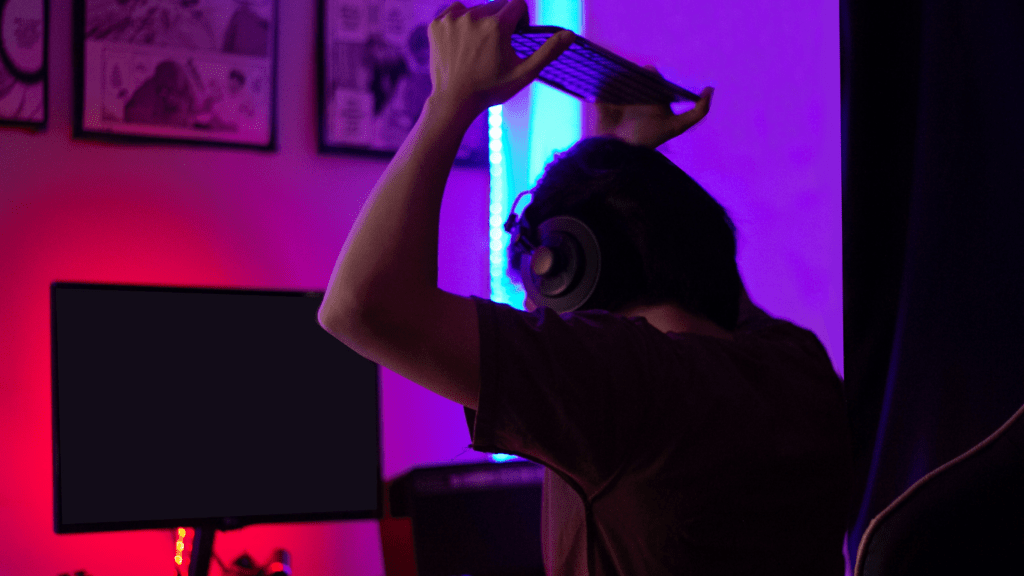Ever wondered what it’s really like to be a professional gamer? It’s not just about playing video games all day; there’s so much more that goes on behind the scenes. From intense practice sessions to strategic planning and maintaining physical and mental health, the life of a pro gamer is a unique blend of passion and discipline.
Understanding the Professional Gaming Landscape
The professional gaming landscape is dynamic and complex, driven by the growing popularity of esports. This environment shapes the daily lives of gamers and influences industry trends.
The Rise of Esports
Esports gained massive traction in the past decade, evolving from casual tournaments to a multi-billion dollar industry. In 2022, the global esports market generated approximately $1.38 billion, with projections estimating it will reach $1.86 billion by 2025.
Major titles like League of Legends, Dota 2, and Counter-Strike: Global Offensive lead the competitive scene, drawing millions of viewers worldwide. Events such as The International and the League of Legends World Championship attract crowds, both in-person and via live streams, showcasing the intensity and excitement of competitive gaming.
Key Players in the Industry
The professional gaming industry comprises several key players, including game developers, tournament organizers, sponsors, and players. Game developers, such as Riot Games and Valve, create the titles that fuel the esports scene.
Tournament organizers, like ESL and DreamHack, host competitions that facilitate player engagement and audience growth. Sponsors, including companies like Intel and Red Bull, invest in teams and events, enhancing visibility and financial backing.
Players, who often join professional teams, dedicate countless hours to practice and participate in competitions, with many achieving fame and substantial earnings through prize money and contracts.
A Typical Day for a Professional Gamer
A typical day for me as a professional gamer blends rigorous training, strategic planning, and self-care. Each moment counts towards enhancing my skills and performance in the competitive gaming landscape.
Morning Routine
My morning routine sets the tone for the day. I often wake up around 7:00 AM to 8:00 AM. First, I hydrate with a glass of water, crucial for staying focused. Then, I engage in 30 minutes of exercise, which includes cardio or strength training, to maintain my physical health.
After that, I eat a balanced breakfast, prioritizing protein and complex carbohydrates for sustained energy. I review my goals for the day, ensuring I’m mentally prepared for the challenges ahead.
Training and Practice Sessions
Training takes up a significant portion of my day. I typically begin my practice sessions around 10:00 AM. I dedicate 6 to 8 hours daily to honing my skills in specific games, like League of Legends or Dota 2.
Each session involves targeted practice, focusing on mechanics, strategy execution, and teamwork. I often analyze previous match replays to identify areas for improvement. Collaborating with teammates during practice helps us build synergy and enhances our overall performance in tournaments.
Regular scrims, or practice matches against other teams, occur multiple times a week to simulate competitive environments.
The Technical Setup
A professional gamer’s technical setup plays a crucial role in performance and audience engagement. This setup consists of advanced gaming equipment, specialized gear, and a reliable streaming configuration.
Gaming Equipment and Gear
I rely on high-end gaming equipment for optimal performance. Key components include:
- Gaming PC: My custom-built rig features an Intel Core i9 processor, NVIDIA GeForce RTX 3080 graphics card, and 32GB of RAM, ensuring smooth gameplay at high frame rates.
- Monitor: I use a 27-inch 144Hz monitor for enhanced responsiveness, which is essential for competitive play.
- Keyboard: A mechanical keyboard with customizable RGB lighting provides tactile feedback and durability, crucial for fast-paced gaming.
- Mouse: I opt for a gaming mouse with a high DPI sensor, allowing for precise movements crucial in FPS games.
- Headset: A noise-canceling headset with surround sound helps me communicate effectively with teammates and immerse in gameplay.
Streaming Setup
- Capture Card: A high-quality capture card ensures seamless streaming of gameplay to platforms like Twitch and YouTube.
- Microphone: A condenser microphone captures clear audio, improving communication and engagement with the audience.
- Webcam: A 1080p webcam allows me to connect with viewers through face-to-face interaction, fostering a personal touch during streams.
- Lighting: Softbox lights eliminate shadows, ensuring that my streaming environment appears professional.
- Streaming Software: I utilize OBS Studio for its versatility, enabling me to customize overlays and manage multiple audio sources.
The Role of Team Dynamics
Team dynamics significantly influence a professional gamer’s success. Collaboration and effective communication skills within the team create a foundation for strategic gameplay and overall performance.
Team Collaborations
Team collaborations foster a competitive edge in professional gaming. Team members work together to develop strategies, refine tactics, and support each other during intense practice sessions or tournaments.
Regular scrimmages allow players to synchronize their gameplay styles, ensuring fluidity during competitions. Sharing insights from past matches also enhances the team’s gameplay, enabling professionals to identify strengths and address weaknesses collectively.
Communication Strategies
Effective communication strategies are vital in high-stakes environments. Teams often implement voice chat systems like Discord or in-game communication tools to facilitate real-time discussions.
Clear, concise communication prevents misunderstandings during matches, ensuring everyone stays on the same page. Additionally, post-game debriefs are essential; they allow gamers to discuss performance, analyze strategies, and provide constructive feedback, ultimately strengthening team cohesion and improving future performance.
Balancing Life and Gaming
Balancing life and gaming presents unique challenges for professional gamers. Maintaining mental and emotional health is as crucial as mastering gameplay mechanics.
Mental Health Considerations
Mental health plays a significant role in a professional gamer’s performance and overall well-being. Stress from competition, long hours of practice, and the pressure to succeed can take a toll on mental health.
Gamers often practice mindfulness strategies like meditation or yoga, which help manage stress and promote focus. Scheduled breaks during training sessions prevent burnout and enhance productivity by allowing time to recharge.
Gamers maintain a healthy work-life balance through regular consultations with mental health professionals, ensuring they can cope with the emotional demands of the gaming industry.
Social Life and Relationships
Building and maintaining social relationships can be challenging for professional gamers. Many gamers dedicate considerable time to their craft, often leading to isolation from friends and family.
However, engaging in social activities or online communities helps sustain personal connections. Gamers often find camaraderie within esports teams or gaming circles, forging bonds with those who share similar passions.
Balancing gaming with social life involves setting aside time for friends and family, participating in local events, or attending esports tournaments together. These interactions enrich the gamer experience while reminding them of the importance of maintaining connections in everyday life.


 As a content specialist and tech-savvy gaming enthusiast, Christopher Elliotterio brings clarity and depth to Power Gamer Strategy Hub’s tutorials and player guides. His contributions focus on helping gamers master mechanics, optimize strategies, and explore new genres with confidence. Through his accessible and detailed writing, Christopher plays a key role in educating and empowering the gaming community.
As a content specialist and tech-savvy gaming enthusiast, Christopher Elliotterio brings clarity and depth to Power Gamer Strategy Hub’s tutorials and player guides. His contributions focus on helping gamers master mechanics, optimize strategies, and explore new genres with confidence. Through his accessible and detailed writing, Christopher plays a key role in educating and empowering the gaming community.